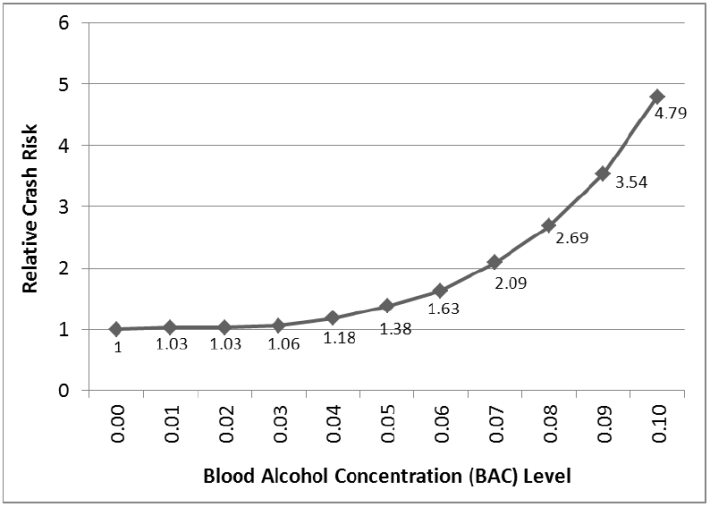The National Transportation Safety Board announced today it will recommend lowering the legal blood-alcohol limit from .08 to .05 percent, saying the U.S. is too tolerant of drunk driving. The recommendation comes as the NTSB released a new report on drunk driving [PDF], establishing a goal of zero deaths.
Studies have shown impairment -- divided attention -- swerving out of the lane -- can begin at blood alcohol levels as low as .009 percent. Risk of crash begins to increase at .04. One study found drivers with .05 percent blood alcohol level were 38 percent more likely to crash than sober drivers.
About a third of traffic deaths are alcohol-related, amounting to 9,878 American lives lost in 2011 alone.
“It’s frustrating that with the education and advocacy, with laws and enforcement and with the many processes set up to deal with the problem of drinking and driving, that we are still seeing so many lives lost,” NTSB Chairman Deborah Hersman said at the hearing.
The difference between .08 and .05 percent is between one and two drinks or beers over three hours for the average person, Bloomberg News reports:
A 160-pound person can have six bottles of beer in three hours and still be under .08. That person would need to cap his or her drinking at five beers if the legal limit were lowered to .05 percent.
NTSB does not have the power to make laws. However, after the agency recommended lowering the legal blood alcohol limit to .08 percent in 1982, the federal government offered incentives to states to adhere to the guidance, and later used penalties to promote compliance. It wasn't until 2004 that every state had adopted a .08 percent limit. But those laws have been credited with helping lower the percent of crashes that are alcohol related from 48 percent to 31 percent today, Bloomberg reports. However, alcohol-related traffic deaths have held stead between 30 and 32 percent since 1995, NTSB reports.
MAP-21 requires compliance with the .08 rule in order for states to be eligible for federal transportation grants.
If a .05 percent limit does indeed reduce the crash rate by half compared to the current limit, thousands of lives would be saved if states embrace the recommendation.
In cooperation with carmakers, NTSB has also been promoting the use of technology that would block the ignition trigger for convicted drunk drivers attempting to use a car under the influence. Not surprisingly, the beverage lobby has resisted this change.






